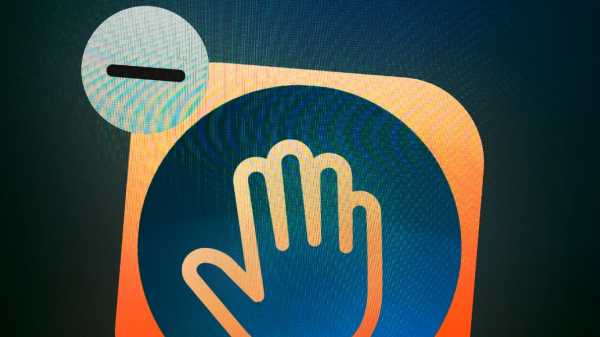
If the pandemic years of 2020 and 2021 were an orgy of digital technology—heralding the renaissance of video meetings, the explosion of on-demand exercise classes, and the birth of new streaming platforms—2022 was a yearlong comedown as we suffered the effects of our Internet gorging. Vaccines and boosters gave us the freedom to do more than stare at yet another screen. Physical isolation was traded for raucous communion in packed restaurants over suddenly trendy Martinis (espresso-flavored, perhaps). We typed less, shouted across tables more. We wanted to do anything besides log onto another Zoom.
Our collective digital exhaustion may have been compounded by the fact that tech companies this year acted sketchier than ever. Even before the spectacular collapse of FTX, the crypto world had lost its momentum in a series of crashes; obscure currencies and N.F.T.s no longer seemed so appealing. The major social networks were foundering, too. To keep us interested, they scrambled to make themselves over in TikTok’s image or tried to drag us kicking and screaming into the metaverse. Twitter’s new ownership turned the company’s previously slow decay into a fast one. The entire Internet began to feel something like a dying mall populated only by stores you don’t want to visit. At the end of this year, I’m left flipping through a phone screen of apps I no longer use and tabs of URLs that inspire faint feelings of dread. The thing that we desire most of all might be less technology, not new forms of it. This New Year, I’m ready for a purge.
My Bindle, iHealth Test, Health Passport Worldwide, VeriFLY
In early 2022, I got stuck in London with a case of COVID, just in time to miss the wedding I’d flown across the Atlantic for. The U.S. required a negative test to enter the country at the time, so I had to wait out ten days of purgatory. The boredom of being stranded alone was worse than the illness itself. That trip gave me a crash course in the janky, off-brand apps involved in travelling abroad during the pandemic. Each one required its own arduous account setup and the signing of various digital affidavits, plus the challenge of uploading one’s latest COVID test results. To escape London, I ended up self-administering a nose swab over video chat, using yet another app that live-monitored me to make sure I wasn’t faking it. The result was thankfully negative, and with that assurance I was finally able to check in to my flight home. For better or worse, few countries still require negative tests or the attendant apps. Let’s hope we never have to use the technology again.
Peloton
Like pandemic puppies, hundreds of thousands of Pelotons were purchased in haste and with a minimum of commitment. We experienced the virtues of having instructors hollering live in our ears. But that doesn’t mean we developed a lasting habit. By 2022, many people were trying to sell their secondhand machines only to find the market flooded with others doing the same. In the guest room of the apartment I share with my girlfriend, our Peloton bike still stands in the middle of the floor like a straggling party guest. I’m ready to get rid of it, along with my clip-in shoes. In the meantime, I’ve found that its guilt-inducing presence does work for me as an exercise solution, by encouraging me to go outside and run.
Facebook Horizon Worlds
Mark Zuckerberg seems to be having fun in virtual reality, but Horizon Worlds, his company’s bespoke V.R. app, was the butt of endless jokes. Its rendered office spaces and virtual mansions were vast, but its avatars lacked legs. Zuckerberg’s own simulacrum, which he posted a goofy “selfie” of in August, was a soulless automaton with vacant eyes, like a zombie from a decade-old video game. It came in for such merciless mockery that Zuckerberg quickly released an update, promising that the technology was “capable of much more. “Legs are coming soon!” the company announced. But Horizons Worlds, which as of October reportedly had less than two hundred thousand users, is so far more like a virtual Potemkin village constructed to keep the boss happy.
“I do believe that more and more of Instagram is going to become video over time," Adam Mosseri, the head of Instagram, said in a video monologue in July. His tone somehow implied that he had no control over this evolution, but the remark signalled a dramatic pivot. The company spent this year pushing its TikTok-like feature, Reels, the short video clips that quickly came to dominate Instagram’s feed. Algorithmic recommendations seemed to push videos more often than any other form of content, to the detriment of user experience. Even Kim Kardashian complained about the pivot. Once a space for elegantly composed photographs and diaristic documentation, and for following one’s friends, Instagram became increasingly loud and disorganized. I left in September and am surprised by how little I miss it.
BeReal
The French app was supposed to offer a return to early Instagram: just take one photo a day, at a random time dictated by the app, no matter what you’re doing in that instant. The results were casual and uncomposed, a more authentic reflection of real life. It was a fun game for a few weeks, but BeReal became less appealing when I realized that when the alert went off I usually wasn’t doing anything interesting, and neither was anyone else. On social media there’s such a thing as too much authenticity.
Twitter has long been referred to as a “hell site,” but the weeks that followed Elon Musk’s acquisition of the company marked a nadir for social media—or perhaps a climax, depending on how prone you are to Schadenfreude. The majority of discourse on the platform focussed on the platform itself and its theoretically impending doom. The situation called to my mind Théodore Géricault’s 1819 painting “The Raft of the Medusa,” which pictures the aftermath of an infamous shipwreck with the few living sailors struggling to climb up a mound of corpses on a decaying raft. In this case, no one was coming to the rescue, especially given that Twitter’s content moderation and safety staffs had been decimated by layoffs.
Coinbase Wallet, Opensea
After the crypto crash in May, it became much less fun to speculate on Bitcoin and Ethereum. What appeared at times as the technology’s sure march toward mainstream acceptance became a debacle as “stablecoins” proved unstable and entire exchanges went bust. When Sam Bankman-Fried’s FTX fell apart, in November, it was enough to make even boosters do a double take—is any part of crypto not a scam? Depreciation of cryptocurrencies isn’t the only problem. Trading in non-fungible tokens (N.F.T.s) this year is reportedly down as much as ninety-seven per cent from a high of $17.2 billion, in January. When I look at the contents of my Ethereum wallet, a motley crew of rabbit avatars, pixelated trees, and metaverse buildings, I cringe a little bit, though I had fun collecting them once upon a time. Who’s going to buy my CryptoTrunks now?
Clubhouse
An app where hundreds of people gather in the same digital rooms to talk over each other in real time: What could go wrong? The rise of Clubhouse might have marked the peak of pandemic technological hype. I listened in on a few conversations myself, and found the experience to be something like attending a series of panels at a very chaotic conference with no guiding theme. The craze did not prove lasting. The number of new Clubhouse app installations are down eighty per cent from last year. It only makes sense: we’re back to getting our fill of random chatter, not just through headphones. Ultimately, Clubhouse had the misfortune of solving a problem that doesn’t exist anymore.
Sourse: newyorker.com






